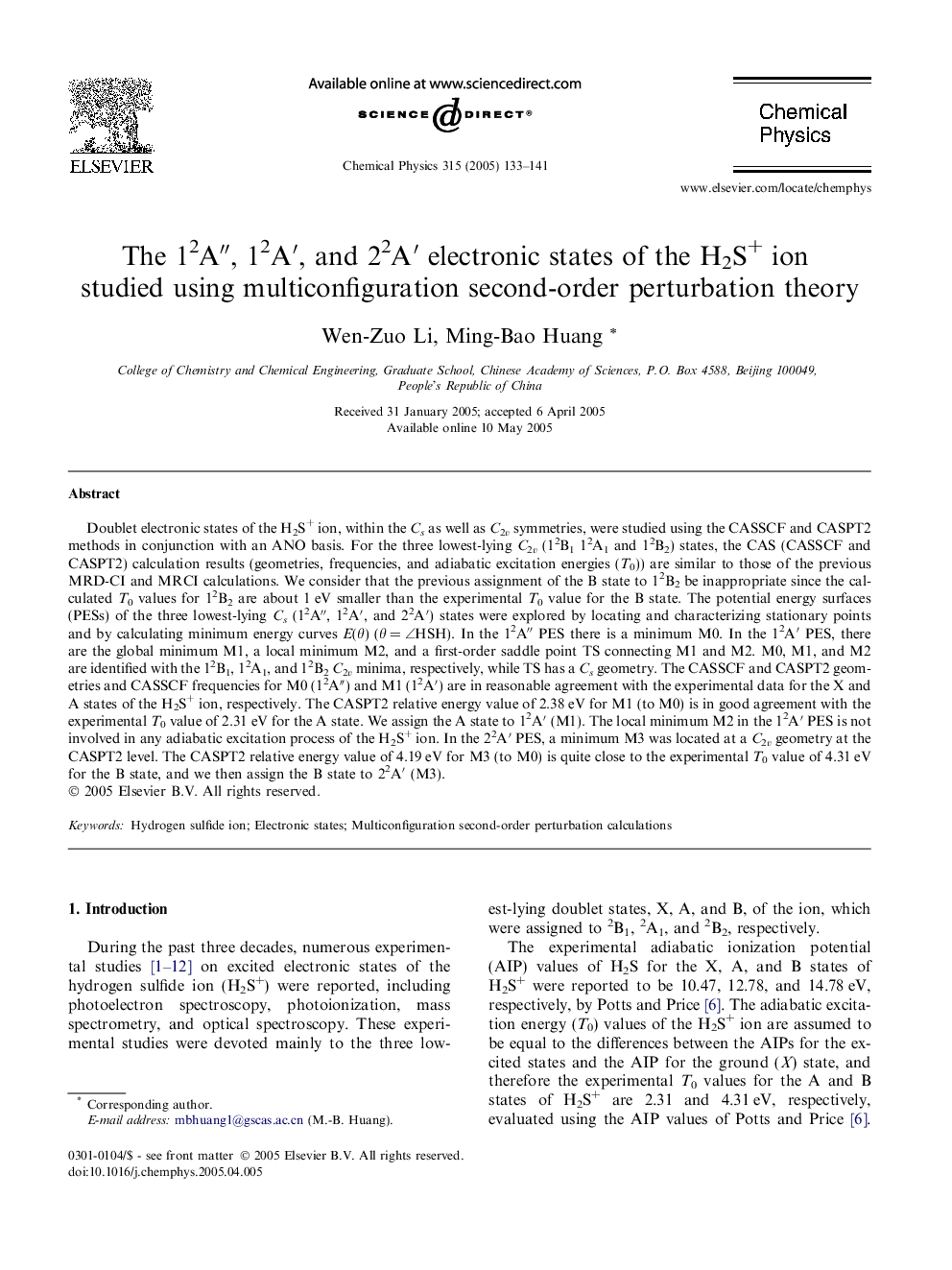| Article ID | Journal | Published Year | Pages | File Type |
|---|---|---|---|---|
| 9575236 | Chemical Physics | 2005 | 9 Pages |
Abstract
Doublet electronic states of the H2S+ ion, within the Cs as well as C2v symmetries, were studied using the CASSCF and CASPT2 methods in conjunction with an ANO basis. For the three lowest-lying C2v (12B1 12A1 and 12B2) states, the CAS (CASSCF and CASPT2) calculation results (geometries, frequencies, and adiabatic excitation energies (T0)) are similar to those of the previous MRD-CI and MRCI calculations. We consider that the previous assignment of the B state to 12B2 be inappropriate since the calculated T0 values for 12B2 are about 1 eV smaller than the experimental T0 value for the B state. The potential energy surfaces (PESs) of the three lowest-lying Cs (12Aâ³, 12Aâ², and 22Aâ²) states were explored by locating and characterizing stationary points and by calculating minimum energy curves E(θ) (θ = â HSH). In the 12Aâ³ PES there is a minimum M0. In the 12Aâ² PES, there are the global minimum M1, a local minimum M2, and a first-order saddle point TS connecting M1 and M2. M0, M1, and M2 are identified with the 12B1, 12A1, and 12B2C2v minima, respectively, while TS has a Cs geometry. The CASSCF and CASPT2 geometries and CASSCF frequencies for M0 (12Aâ³) and M1 (12Aâ²) are in reasonable agreement with the experimental data for the X and A states of the H2S+ ion, respectively. The CASPT2 relative energy value of 2.38 eV for M1 (to M0) is in good agreement with the experimental T0 value of 2.31 eV for the A state. We assign the A state to 12Aâ² (M1). The local minimum M2 in the 12Aâ² PES is not involved in any adiabatic excitation process of the H2S+ ion. In the 22Aâ² PES, a minimum M3 was located at a C2v geometry at the CASPT2 level. The CASPT2 relative energy value of 4.19 eV for M3 (to M0) is quite close to the experimental T0 value of 4.31 eV for the B state, and we then assign the B state to 22Aâ² (M3).
Keywords
Related Topics
Physical Sciences and Engineering
Chemistry
Physical and Theoretical Chemistry
Authors
Wen-Zuo Li, Ming-Bao Huang,
